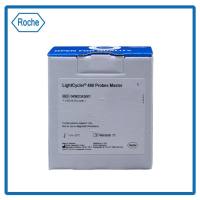Quantitative in situ hybridization has emerged as a powerful technique for the study of gene expression within complex heterocellular systems, such as the central nervous system, by allowing the measurement of the relative levels of mRNA and their variations under experimental or physiological conditions. When compared with other quantitative techniques, such as Northern blot or dot blot, this approach enables the analysis of gene expression not only at the regional level but also at the cellular level, and is particularly useful for the study of heterogeneous cellular populations (1 –6 ). Quantitative in situ hybridization has been widely developed during the past 10 years, especially in the area of Image analyzer systems, and has reached a very high level of sensitivity by using appropriate standardization and methods of measurement (1 , 2 , 5 –9 ). For quantitative in situ hybridization, two levels of analysis yield different and complementary information: (1) macroscopic study using densitometry on Xray films, which measures vartations of mRNA at the anatomical level, and (2) microscopic study, which measures mRNA at the cellular level.






